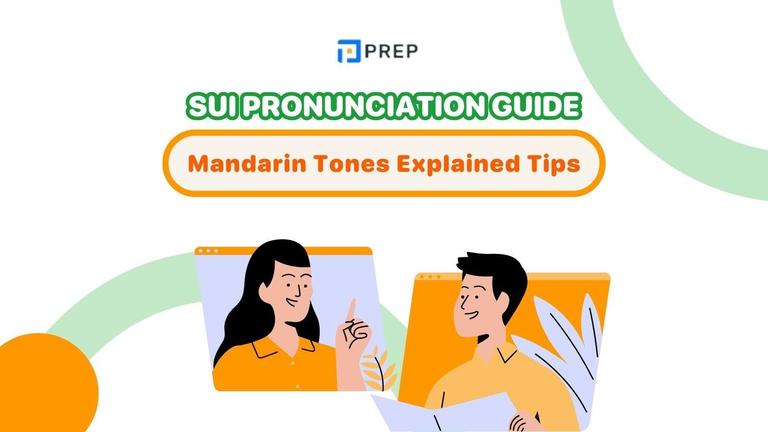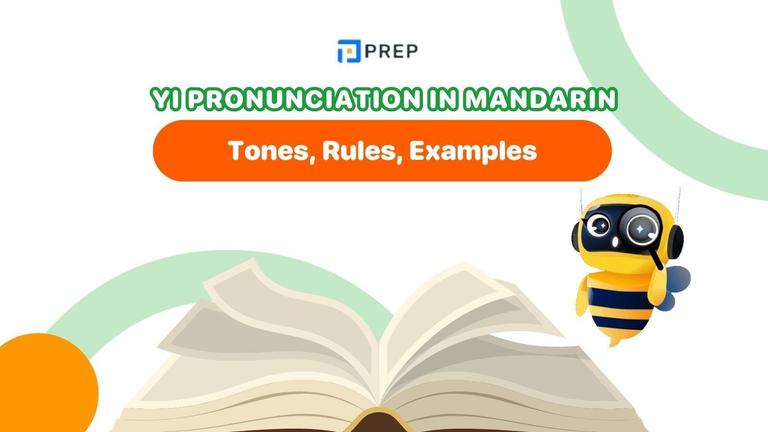Sorry in English: Formal and Casual Examples
Saying "sorry in English" may sound simple, but using it correctly in real-life situations—formal or casual—can be tricky. This guide helps you understand its meaning, choose the right expression for each context, and master natural apology phrases used by native speakers.

I. What Does “Sorry in English” Really Mean?
At first glance, “sorry” in English might seem like a simple word—just a way to say you made a mistake. But in reality, this tiny word carries a wide range of emotional and social meanings, making it one of the most flexible expressions in English communication.
At its core, “sorry” expresses regret or remorse. You say it when you’ve done something wrong, caused inconvenience, or want to show empathy. Beyond that, it’s deeply tied to politeness, especially in cultures like the UK where saying "sorry" can be just a courteous gesture, not necessarily an admission of guilt.
“Sorry” vs. “Excuse Me” vs. “Apologize” - These words may seem interchangeable, but they serve slightly different purposes:
|
Phrase |
When to Use |
Tone |
Example |
|
Sorry |
Casual apology, showing empathy, polite interruption |
Neutral / Friendly |
“Sorry I’m late!” |
|
Excuse me |
Getting attention, asking to pass, interrupting |
Polite / Brief |
“Excuse me, is this seat taken?” |
|
Apologize |
Formal apologies in emails, speeches, official talks |
Formal / Serious |
“I sincerely apologize for the misunderstanding.” |
Understanding the nuances and context-driven nature of “sorry in English” is a small but powerful step toward sounding more natural, polite, and fluent in conversation.
II. Common Ways to Say Sorry in English
There are many ways to say “sorry” in English, depending on the situation, level of formality, and your relationship with the listener. Understanding these variations helps you sound more natural and polite.
1. Informal Ways to Say Sorry in English
When talking to friends, family members, or people close to you, apologizing doesn’t always need to be formal. In fact, casual speech often relies on short, natural ways to say “sorry” that feel more relaxed and genuine.
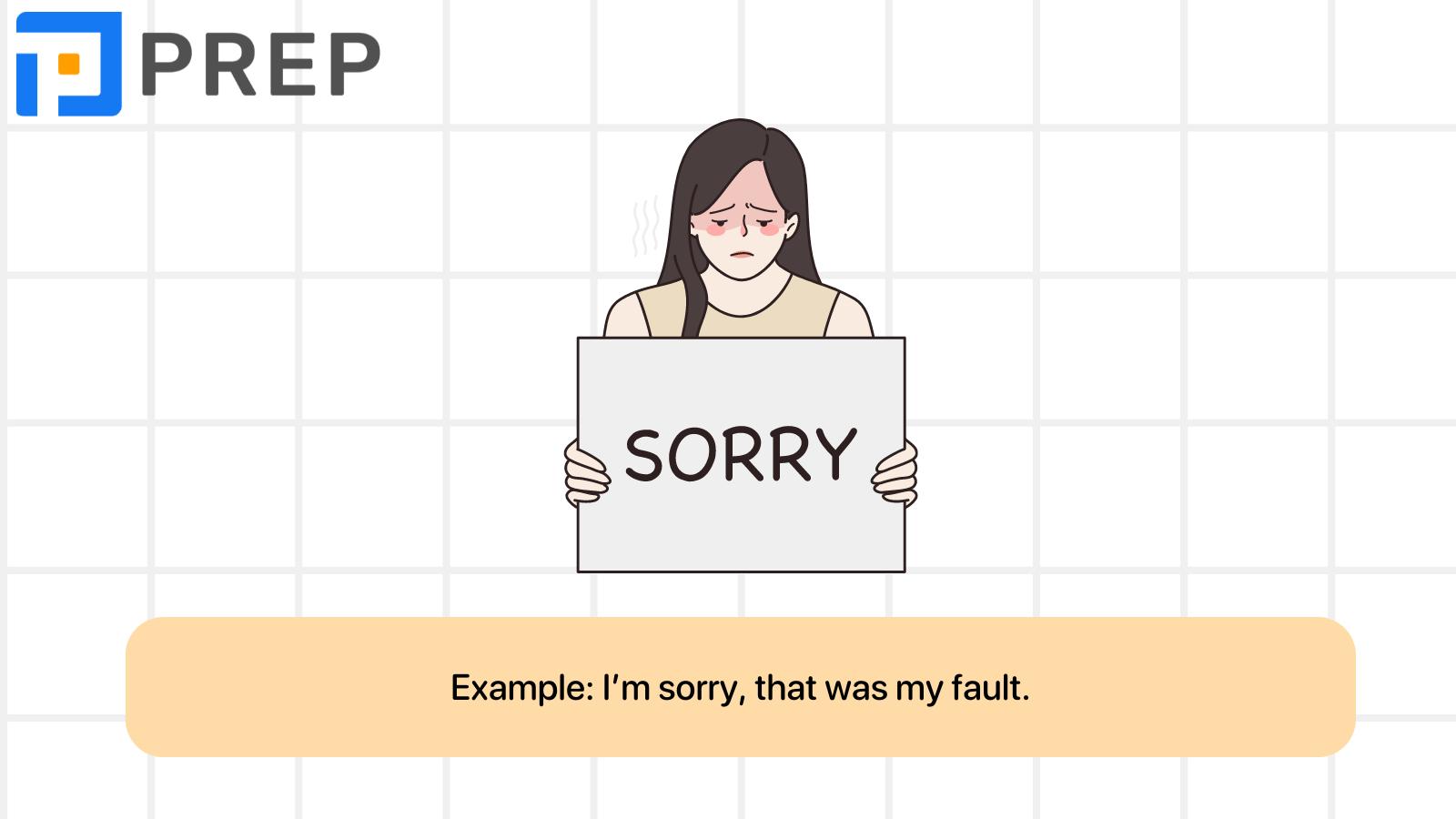
These expressions are useful for:
- Small mistakes or accidents
- Friendly environments (home, messaging, daily conversations)
- Speaking informally on social media or in texts
|
Phrase |
Meaning |
Example |
When to Use |
|
Sorry! |
Generic, fast apology |
"Oops, sorry! I didn’t see you there." |
Small accident, quick social slip |
|
My bad. |
Admitting a fault (slang) |
"Forgot your coffee – my bad!" |
Light mistakes among friends |
|
Oops! |
Mild surprise with apology implied |
"Oops! That was your seat? Sorry!" |
Trivial mistakes, mix-ups |
|
I messed up. |
Admitting you did something wrong |
"I really messed up last night, sorry." |
Emotional, deeper mistakes with friends |
|
Didn’t mean to. |
Saying something happened by accident |
"Didn’t mean to bump into you like that." |
Accidental behavior |
|
I didn’t mean it. |
Clarifying it wasn’t intentional |
"What I said yesterday—I didn’t mean it." |
Hurtful words said unintentionally |
|
That was on me. |
Taking full responsibility (informal tone) |
"Our order’s late—that was on me." |
Owning up to something going wrong |
|
Sorry about that. |
A light, polite apology for minor slip-ups |
"Forgot to reply—sorry about that!" |
Informal chats, work texts |
|
My fault. |
Casual way to take the blame |
"Didn’t update the doc—my fault." |
Team setting, friend groups |
|
I goofed up. |
Very casual, humorous tone |
"I totally goofed up the recipe!" |
Used when you're laughing at your own mistake |
|
I owe you an apology. |
A bit more serious, still conversational |
"I owe you an apology for what I said." |
Personal, when things went emotionally wrong |
|
Forgive me. |
Sincere, emotional or dramatic (semi-formal) |
"Forgive me—I honestly didn’t realize." |
Deeper relationships, light drama |
2. Formal Apology Phrases in English
In professional and formal situations—like writing emails, speaking with superiors, or communicating with clients—saying “sorry” in English requires a more polished and respectful tone. Using informal expressions like “My bad” or “Oops” can easily come across as unprofessional. Instead, it’s important to choose words that show both accountability and professionalism.
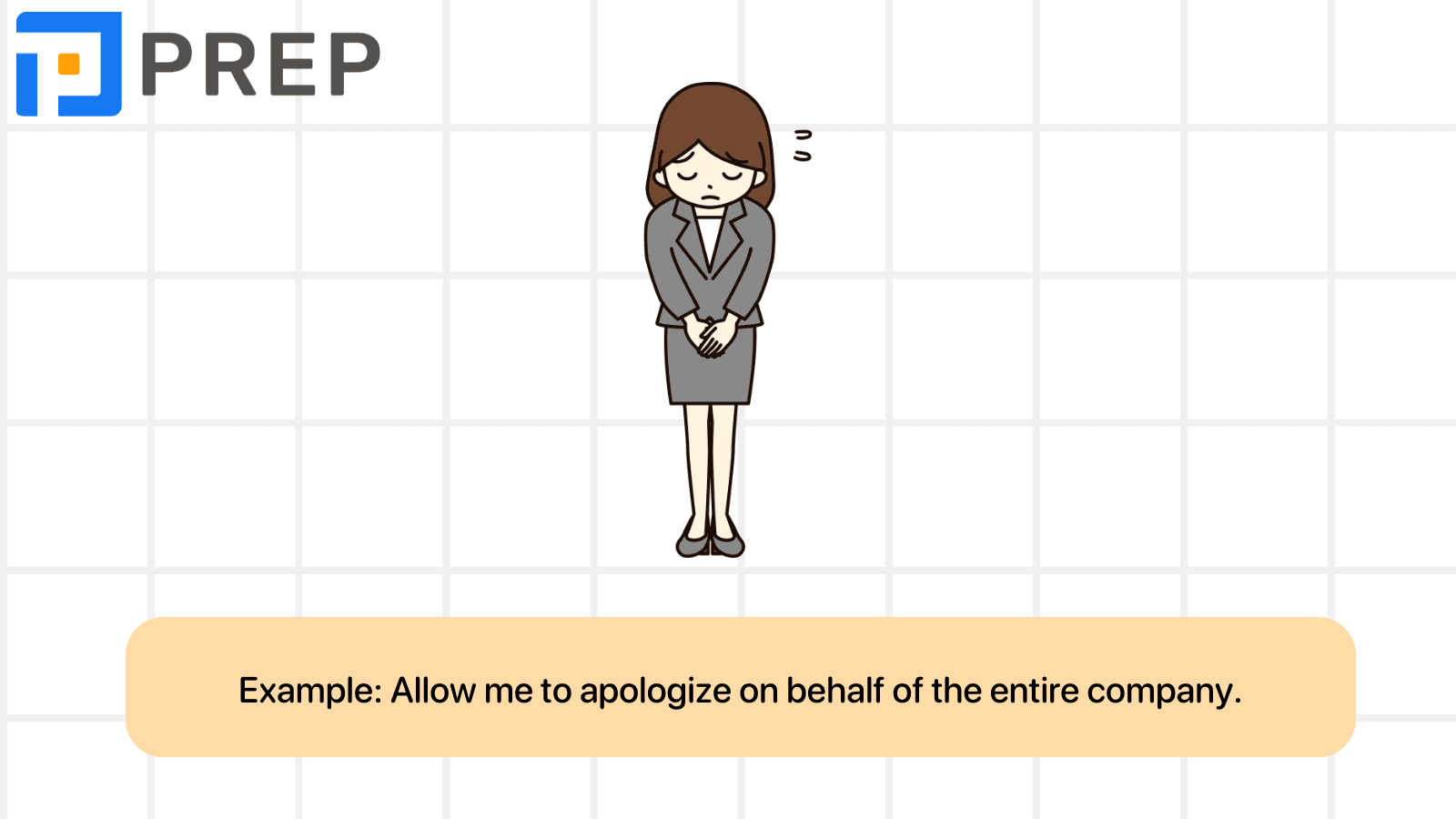
These phrases will be especially helpful when:
- Apologizing in business emails or letters
- Addressing mistakes at work or in academic settings
- Responding diplomatically in sensitive situations
|
Phrase |
Meaning |
Example |
Context |
|
I sincerely apologize for… |
Strong and heartfelt expression of regret |
“I sincerely apologize for the delay in responding.” |
Business emails, service delays |
|
Please accept my apologies. |
Polite, neutral expression requesting forgiveness |
“Please accept my apologies for the inconvenience.” |
Letters, formal speech |
|
I take full responsibility for… |
Strong statement of accountability |
“I take full responsibility for the error in the report.” |
Work-related errors |
|
I regret the inconvenience caused. |
Apologizing while maintaining professionalism |
“I regret the inconvenience caused by the cancellation.” |
Customer service, official notices |
|
It was not my intention to... |
Clarifying intent and softening the impact |
“It was not my intention to offend anyone during the meeting.” |
Conflict resolution, sensitive topics |
|
I would like to express my regret… |
Formal and slightly indirect but respectful |
“I would like to express my regret regarding the delayed shipment.” |
Written apologies, corrections |
|
We apologize for any misunderstanding. |
Corporate or team-based apology |
“We apologize for any misunderstanding that may have occurred.” |
Business/external communication |
|
My deepest apologies… |
Very respectful and serious tone |
“My deepest apologies for the mistake during the presentation.” |
Formal speech, high-level communication |
|
I apologize unreservedly. |
Emphasizes total ownership without excuses |
“I apologize unreservedly for the damage caused.” |
Legal, political, or public statements |
Here’s a simple structure you can follow to write a professional apology email:
|
Email Section |
Content Example |
|
Greeting |
Dear [Name], |
|
Apology Statement |
I sincerely apologize for the late delivery of your order. |
|
Explain Briefly (Optional) |
There was an internal system error that caused the delay. |
|
Take Responsibility + Offer Resolution |
We take full responsibility and have issued a refund as compensation. |
|
End Politely |
We appreciate your understanding. Please feel free to contact us if you have further concerns. |
|
Closing |
Kind regards, [Your Name] |
3. British vs. American Ways to Say Sorry
While the word “sorry” is used globally across English-speaking cultures, the way it functions in British and American English reveals subtle but important differences. Understanding these variations will help you adjust your communication depending on who you're speaking to, and adopt more natural, fluent English in context.
- British English: Saying Sorry Frequently and Politely - In British English, “sorry” is not only a word used to admit fault, but also a common tool for maintaining politeness and avoiding social tension. It’s used even in situations where the speaker is not necessarily at fault.
- American English: Saying Sorry When It’s Necessary - In American English, “sorry” tends to be used more deliberately, often when the speaker is actually at fault or wants to address a problem. The tone is often sincere but more direct, and speakers are more likely to pair an apology with a proposed solution.
|
Aspect |
British English |
American English |
|
Tone |
Polite, indirect |
Direct, action-oriented |
|
Frequency of Use |
Very frequent, even when not strictly necessary |
Less frequent, typically tied to an actual mistake or inconvenience |
|
Common Expressions |
“Sorry, would you mind…”, “I’m terribly sorry” |
“Sorry I missed your call”, “Sorry about that” |
|
Communication Style |
Softens the message, maintains social harmony |
Focuses on addressing the problem directly |
|
Main Characteristics |
Often instinctive and culture-driven; reflects courteous behavior |
Intentional and purposeful; highlights personal responsibility |
|
Common Functions |
Used to ease the tone, express empathy, or maintain politeness |
Used to admit fault and often accompanied by a solution or next step |
As a learner, it's helpful to understand both styles so you can adjust your apologies depending on context and cultural expectations.
III. Using “Sorry in English” in Writing: Emails, Letters & Texts
Knowing how to say “sorry” in conversation is one thing—but using it appropriately in writing is a slightly different skill. Whether you're writing an email at work, sending a personal message, or submitting a formal letter, expressing an apology in clear, respectful, and natural English can make a big difference.
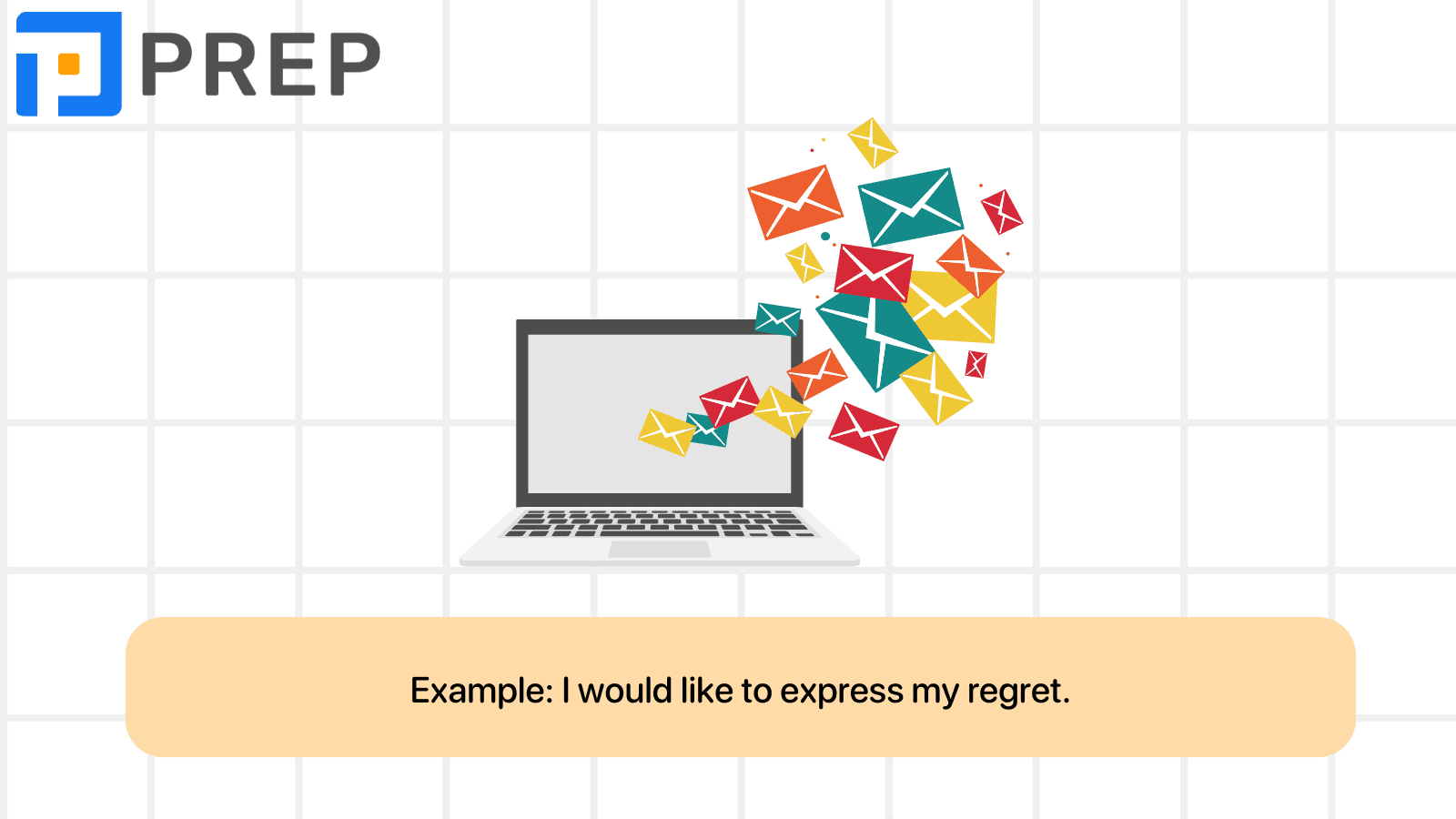
Workplace and Business Emails - In professional settings, apologies should sound polite, responsible, and solution-oriented.
Common phrases:
- I sincerely apologize for the delay.
- Please accept my deepest apologies for...
- We regret any inconvenience caused.
- I take full responsibility for...
Example sentence: I sincerely apologize for the oversight in yesterday’s report. We’ve corrected the figures and updated the file.
Tips:
- Keep it formal but human.
- Don't over-apologize—focus on clarity and accountability.
- Offer a resolution if possible.
Personal Messages and Texts -In less formal situations, such as texting a friend or messaging a classmate, you can use more casual and emotional language.
Common examples:
- I’m really sorry about what I said.
- Didn’t mean to hurt your feelings.
- My bad – I completely forgot!
- Hope you can forgive me.
Example text: Really sorry I missed your birthday lunch. I got caught up at work—let me make it up to you soon.
Tips:
- Be honest and to the point.
- Express empathy (if the other person was affected).
- Show willingness to make things right.
Sample Apology Email Structure
| Email Part | Example |
| Greeting | Dear [Name], |
| Apology Statement | I sincerely apologize for the late delivery of your order. |
| Brief Explanation | There was an internal system error that caused the delay. |
| Responsibility & Action | We take full responsibility and have issued a refund as compensation. |
| Polite Closing | We appreciate your understanding. Please feel free to contact us anytime. |
| Sign-off | Kind regards, [Your Name] |
Mastering how to apologize in writing—both formally and casually—will help you become a more professional, respectful, and effective communicator in English.
IV. Say Sorry in English Like a Pro on English Tests
In English speaking tests like IELTS, APTIS, TOEIC Speaking, or even casual interviews, knowing how to apologize properly can help you sound more natural, polite, and confident—even when you make mistakes.
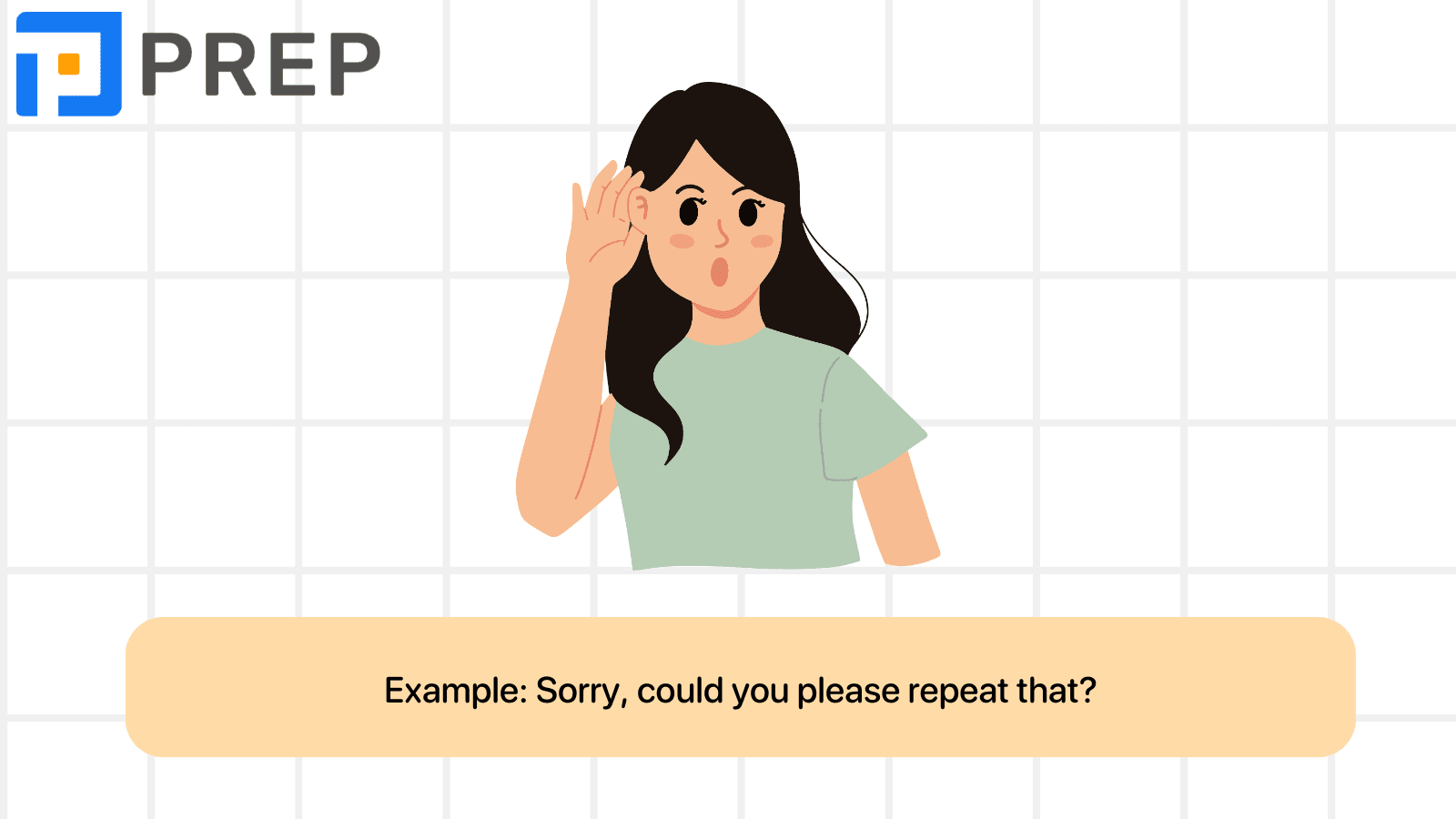
Apologizing in a test is not just about good manners. It’s also a valuable strategy to handle:
- Misunderstandings
- Technical issues
- Pauses or mistakes in speaking
|
Situation |
Useful Phrase |
Purpose |
|
You didn’t hear or understand the question |
“I’m sorry, could you repeat that, please?” |
Asking for clarification politely |
|
You need a moment to think |
“Sorry, let me think for a moment.” |
Buying time without sounding nervous |
|
You misused or mispronounced a word |
“Sorry, I meant to say...” |
Correcting yourself smoothly |
|
You misunderstand the task |
“Oh, sorry—could you explain that again?” |
Clarifying instructions |
|
You interrupt your speaking partner |
“Sorry for interrupting—please go ahead.” |
Being polite and respectful in conversation |
|
You forgot a key word or idea |
“I’m sorry, I forgot the word, but I’ll describe what I mean.” |
Showing flexibility and problem-solving |
|
You want to change your answer |
“Actually—sorry—I’d like to rephrase that.” |
Rebuilding or improving your previous response |
Notes for Test Takers:
- Use apologies to show that you are in control of the conversation, not losing confidence.
- Always keep a natural tone, not overly formal or robotic.
- Combine these phrases with confident body language and eye contact (if applied in face-to-face tests).
V. Personalized IELTS Preparation
Now, you must have known what English apologies are. In this article, PREP has compiled over 100 basic phrases to say sorry in English for you to grasp and apply in various communication situations. Need help acing your IELTS exam? Check out our top-rated practice modules here:
-
IELTS course: Mastering IELTS exam from zero to hero!

Hi I'm Chloe, and I am currently serving as an Product Content Administrator at Prep Education. With over five years of experience in independent online IELTS study and exam preparation, I am confident in my ability to support learners in achieving their highest possible scores.
Comment
Premium content
View allPersonalized roadmap
Most read




